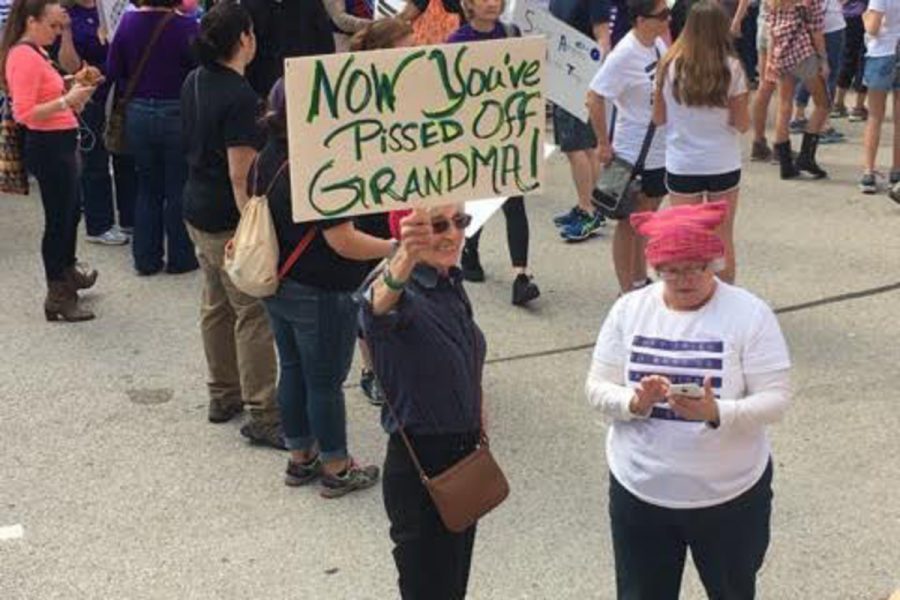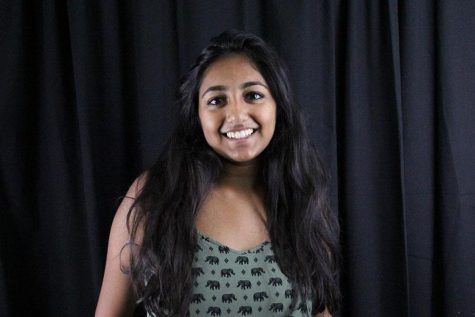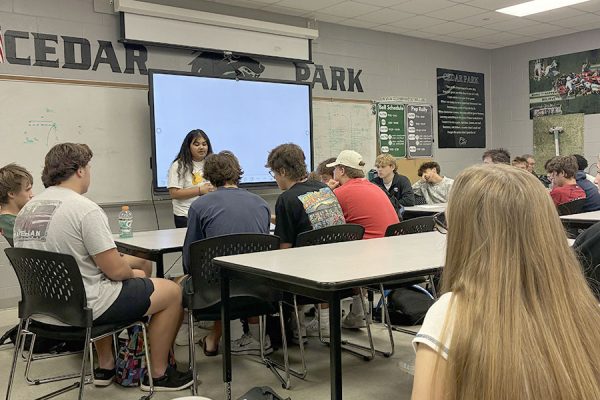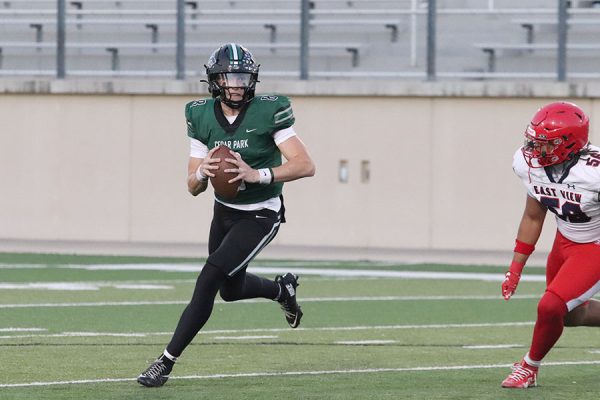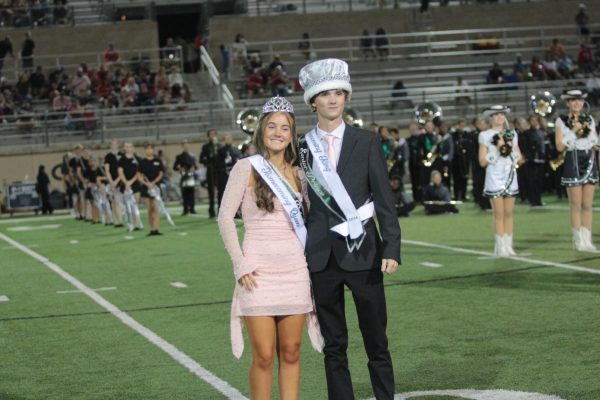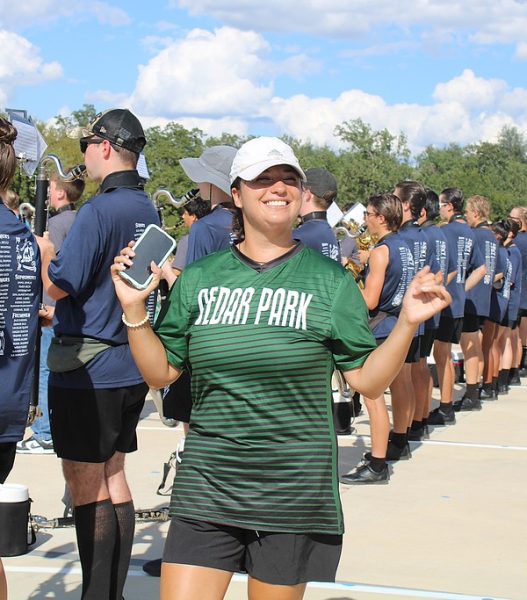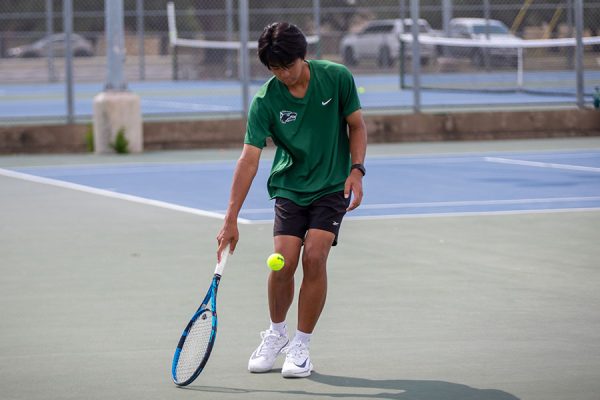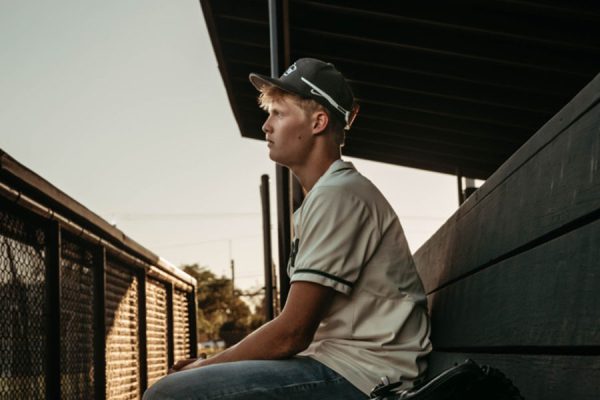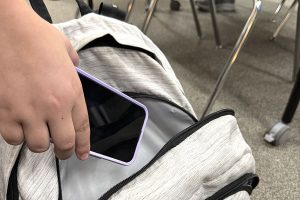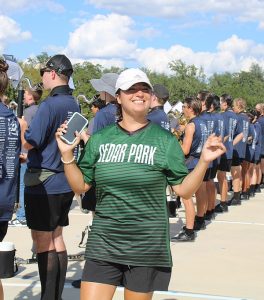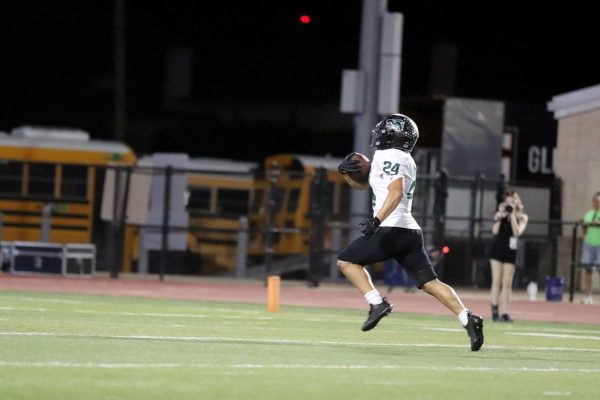Women’s March Storms Texas Capitol
Marchers held up many different signs signaling their support for different ethnic groups, religions and female rights, but an extent of signs illustrated people’s feelings toward the new administration. “It’s important now more than ever to raise awareness that things are not perfect, that there is always more to do and more to fight for,” senior CW Ko said. “Planned Parenthood is at risk, environmental regulations are at risk, gay rights are at risk, and several civil liberties are at risk. Trump’s presidency poses a threat not just through legislation, but through his rhetoric, and we must not allow fear and division to become normalized.”
February 2, 2017
People crowded throughout the city as women, men and children from all around the state gathered at the Austin capitol on Jan. 21. to march in honor of equal rights. The Women’s March was held the day after President Donald Trump was inaugurated into the White House and became the 45th President of the United States of America.
The Women’s March was an idea and movement founded by Theresa Shook via a single Facebook post. The post promoted ideas of equality, and it gained enough support that Shook created the march to celebrate these ideals.
While the march was based in Washington, hosting upwards of 100,000 people, Austin also had a large turn out, with about 40,000 people walking to the capitol, according to the Austin Police Department. Among the crowd were several CP students, including Senior CW Ko.
regardless of gender, race or sexuality,” Ko said. “The march represented a fight for civil rights and environmental protections, both of which I’m extremely passionate about.”
The march, according to Ko, was about 1.5 miles long, and people walked from downtown Austin to the capitol, where speeches were made by civil rights activists.
“Wendy Davis was one of the concluding speeches and her words about activism and the importance of feminism and diversity literally gave me goosebumps because it was so incredibly inspiring to be surrounded by people as far as you could see and listening to a speech about equality and voice in the heart of Texas,” Ko said.
Speeches were not the only thing that moved marchers, it was also the ambiance and the spirit of everyone there, according to Ko.
“The atmosphere was incredibly positive and powerful,” Ko said. “The streets were lined with people cheering us on and waving signs of their own, and people of all ages, genders, races, and sexualities were there with the same beliefs of equality. People everywhere were smiling and waving and giving us thumbs up and it was just incredibly powerful and inspiring.”
During the march, people celebrated with creating signs, wearing pink shirts and caps. Throughout the week after the march, social media was filled with people posing pictures with their signs and outfits made especially for the march.
“My favorite moment was marching with the crowd and seeing what everyone had on their posters and knowing that I was surrounded by people who share a common goal of making their voices heard,” senior Sophie Astronoto said. “My favorite sign was one that read “We All Can Do It” with illustrations of women of different racial, religious and cultural backgrounds because that was something that I could relate to personally. As an Asian American Muslim, I felt that it was incredibly inclusive and progressive.”
Public demonstration has increased since the inauguration of Trump, however this rally is one of the biggest so far, and is said to be one of the biggest protest marches after a presidential inauguration, according to Time. Junior Sydney Herrick also participated in the march.
“After the election, our nation has been in a very divided and fragile state,” Herrick said. “I think the march brought a lot of people together and provided the unity that was destroyed. I think the march sent a very clear message that we as women- and men and children stand together and fight for the rights we deserve.”
In the past, young adults have played huge parts in civil movements and redefining social boundaries, such as the anti-Vietnam movements imposed by students from Columbia university and when Little Rock introduced colored children into an all-white school. Students have played a role in our nation’s history and CP students are no exception. Though, according to Astronoto, it is not the age that should determine the role you play, but your education.
“I don’t think there should be a point specifying when you’re old enough to protest, but I definitely think that you should educate yourself before protesting,” Astronoto said. “We all have the right to our own opinion, but it is important to be well-read before partaking in political activism and fighting for what it is you believe in.”
Women, despite the name, were not the only people that marched. Fathers, sons and brothers from all over the city came in to support the march. Senior Joel James, while not at the march, did see the effect the march had on the world.
“I think any form of peaceful protest is useful in electing change,” James said. “It’s one of the few ways normal people can voice their opinions.”
The march moved thousands of women, men and children around the world, including marches in Europe, Asia and even Antarctica. Participants were asked by different media outlets that covered the event to ask: #whyImarched, and why they wanted to make a difference.
“I marched in part for the experience, but mostly in part for standing up for something that I believe in,” Herrick said. “Instead of complaining about issues surrounding women’s rights, I actually got out and made a difference. I was a part of something greater than myself and it was wild to be surrounded by so many other men and women who shared by same values and beliefs. It was really powerful.”

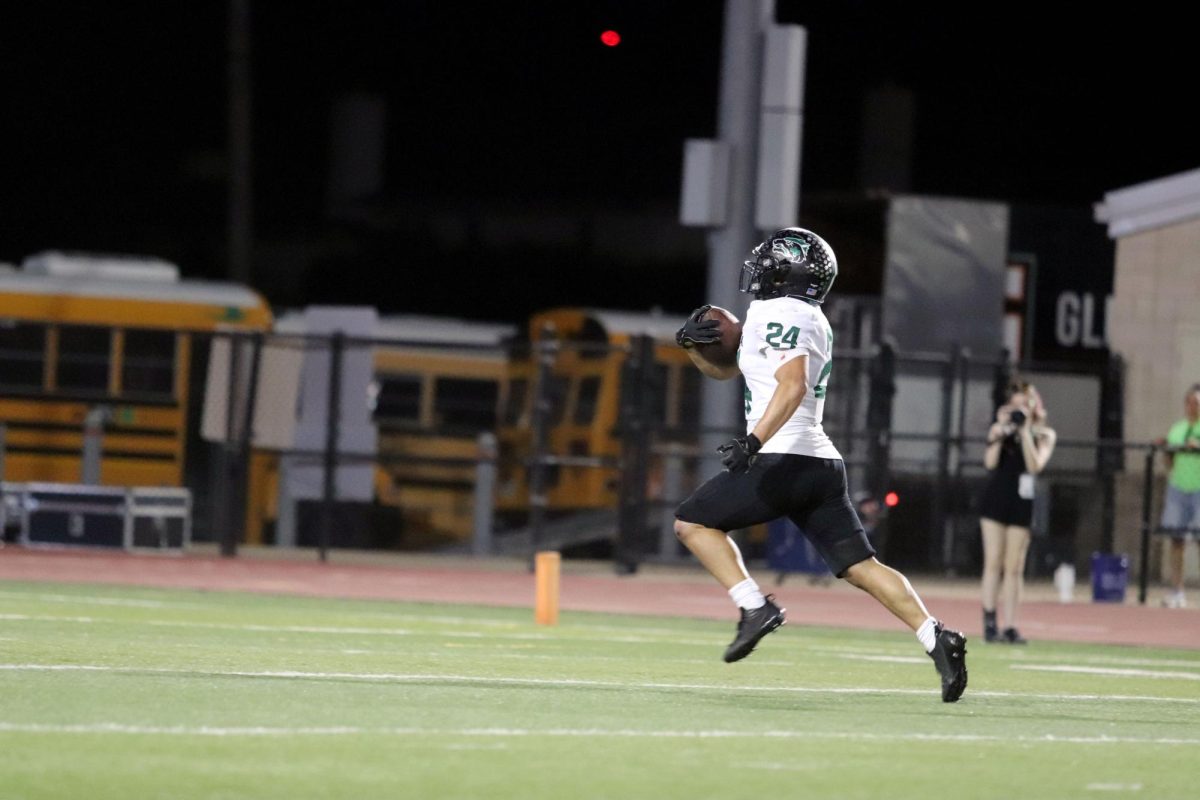

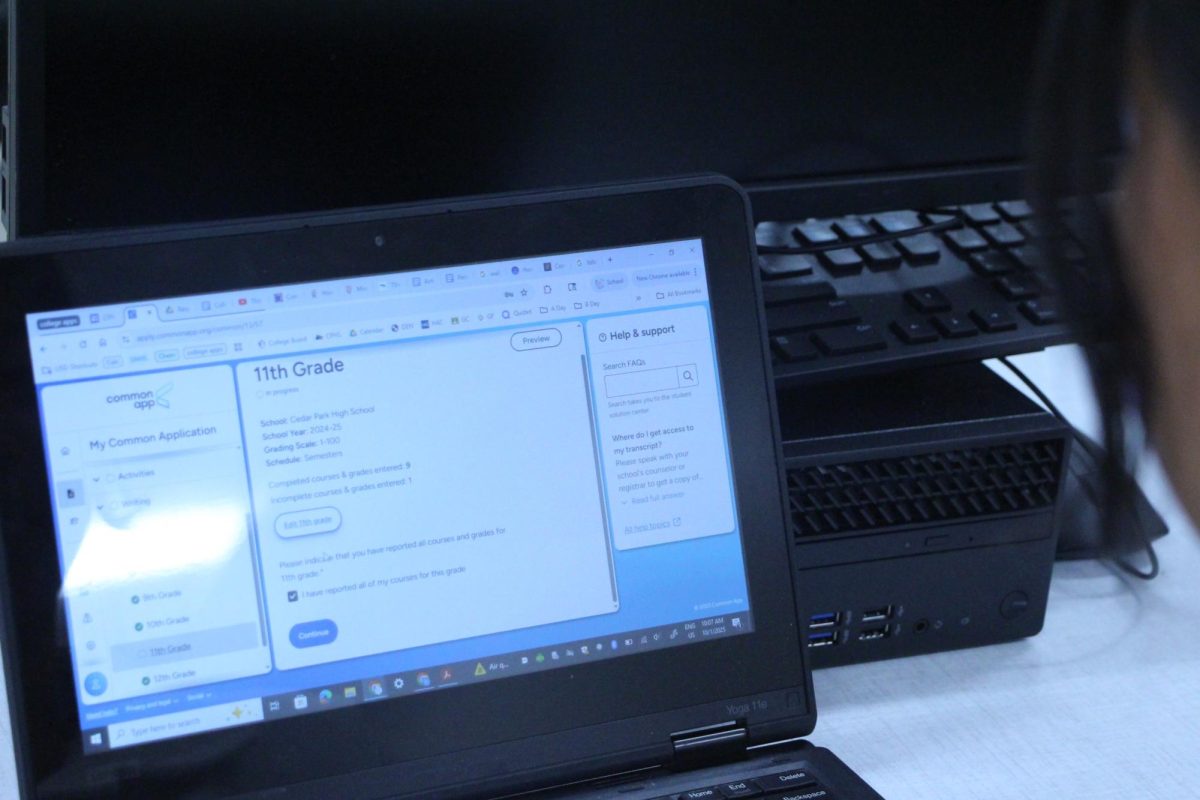
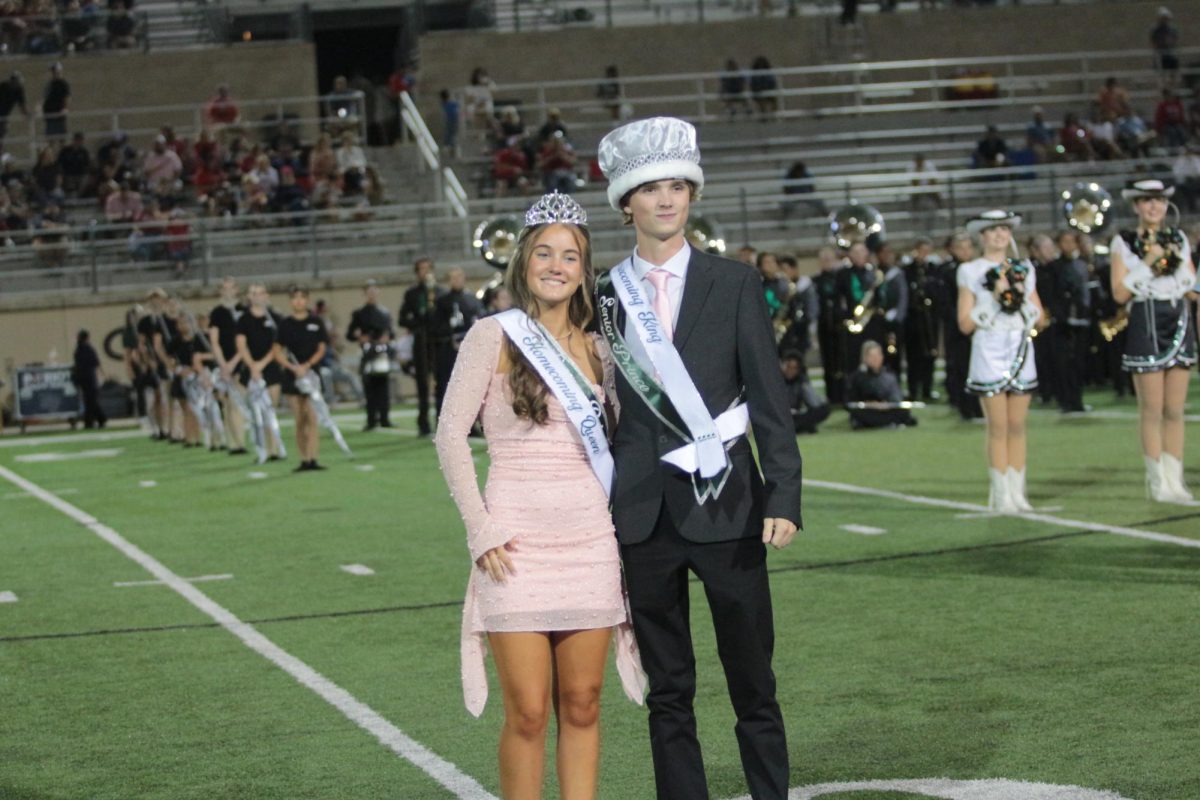

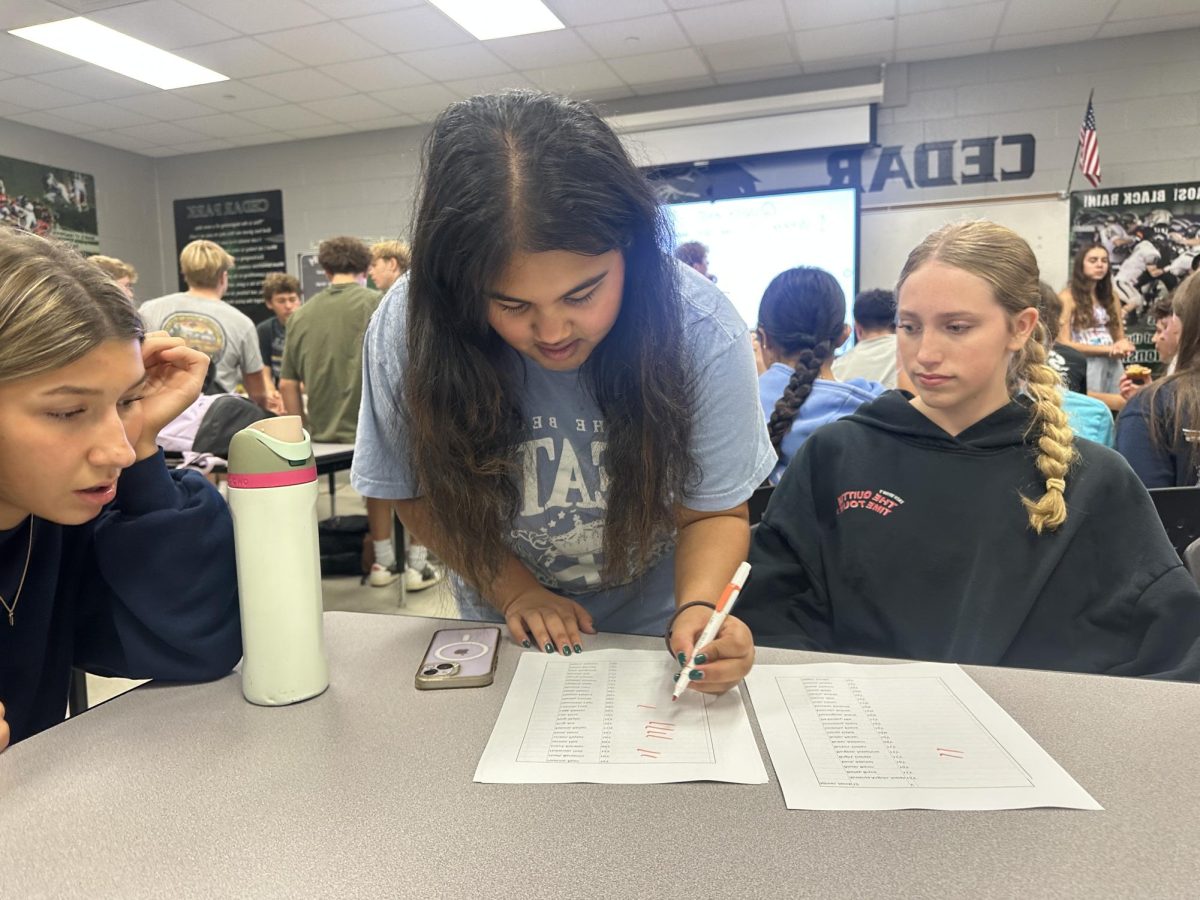

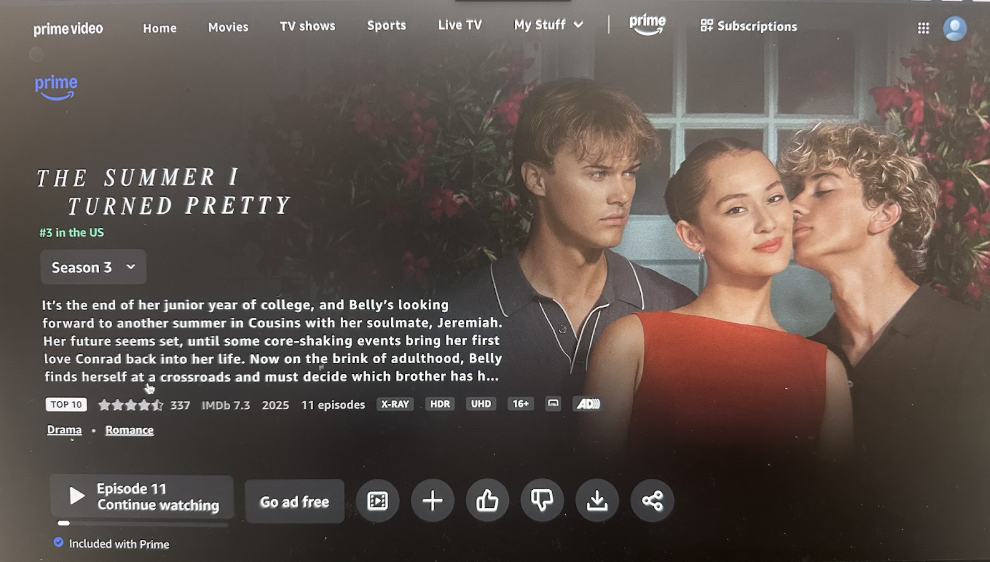

![Broadcast, yearbook and newspaper combined for 66 Interscholastic League Press Conference awards this year. Yearbook won 43, newspaper won 14 and broadcast took home nine. “I think [the ILPC awards] are a great way to give the kids some acknowledgement for all of their hard work,” newspaper and yearbook adviser Paige Hert said. “They typically spend the year covering everyone else’s big moments, so it’s really cool for them to be celebrated so many times and in so many different ways.”](https://cphswolfpack.com/wp-content/uploads/2025/05/edited-ILPC.jpg)



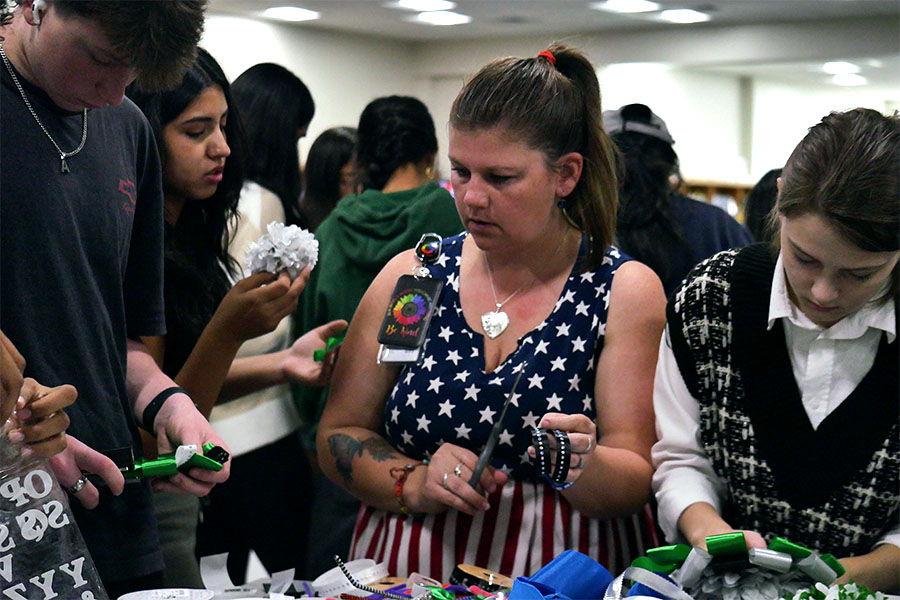

![Looking down at his racket, junior Hasun Nguyen hits the green tennis ball. Hasun has played tennis since he was 9 years old, and he is on the varsity team. "I feel like it’s not really appreciated in America as much, but [tennis] is a really competitive and mentally challenging sport,” Nguyen said. “I’m really level-headed and can keep my cool during a match, and that helps me play a bit better under pressure.” Photo by Kyra Cox](https://cphswolfpack.com/wp-content/uploads/2025/09/hasun.jpg)

![Bringing her arm over her head and taking a quick breath, junior Lauren Lucas swims the final laps of the 500 freestyle at the regionals swimming competition on date. Lucas broke the school’s 18-year-old record for the 500 freestyle at regionals and again at state with a time of 4:58.63. “I’d had my eye on that 500 record since my freshman year, so I was really excited to see if I could get it at regionals or districts,” Lucas said. “ State is always a really fun experience and medaling for the first time was really great. It was a very very tight race, [so] I was a bit surprised [that I medaled]. [There were] a lot of fast girls at the meet in general, [and] it was like a dogfight back and forth, back and forth.” Photo by Kaydence Wilkinson](https://cphswolfpack.com/wp-content/uploads/2025/03/Kaydence-2.7-23-edit-2.jpg)
![As her hair blows in the wind, senior Brianna Grandow runs the varsity girls 5K at the cross country district meet last Thursday. Grandow finished fourth in the event and led the varsity girls to regionals with a third place placement as a team. “I’m very excited [to go to regionals],” Grandow said. “I’m excited to race in Corpus Christi, and we get to go to the beach, so that’s really awesome.” Photo by Addison Bruce](https://cphswolfpack.com/wp-content/uploads/2025/10/brianna.jpg)











